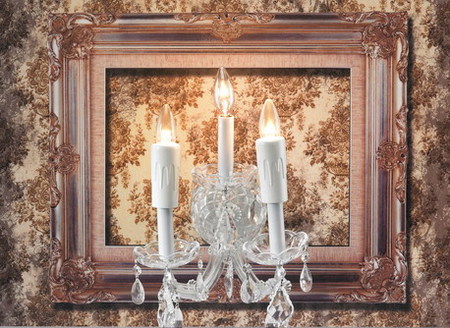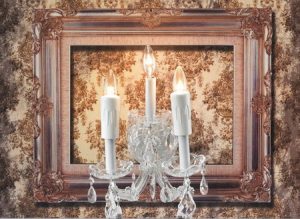LEDs + Lighting
LED Lighting Grabs Attention
LED lights overwhelmingly dominated Lightfair.
Published
15 years agoon

Recently, numerous acquaintances have contacted me regarding LED lighting articles they’ve read in the New York Times and the Wall Street Journal. After having read of this new technology, these friends became excited and, knowing I had firsthand knowledge, telephoned to discuss LED uses and concepts.
After having received the first few calls, I knew something, a sea change perhaps, was looming. My friends had sensed — no, signaled — an LED upsurge.
I had similar feelings after visiting this year’s Lightfair tradeshow in NYC. It’s among the world’s largest, annual, architectural and commercial lighting tradeshows, and, in May, it celebrated its 20th anniversary with recordbreaking attendance: more than 23,000 people and 475 exhibitors. From the Lightfair Institute’s opening-day, innovation-award ceremony (where LED-based luminaires garnered the most awards) to the 170,000-sq.-ft. exhibit floor, LED lights, for the first time, overwhelmingly dominated the show.
At Lightfair, David DiLaura, an authoritative and renowned lighting designer, shared valuable insights in his “20 Years of Light and Lighting” address. He said a divergent group of scientists — ones with no prior lighting affiliations — brought LEDs to market. At that time, DiLaura said, this group lacked lighting knowledge, but, he added, this will soon change.
He also said lighting professionals must accept LEDs because the technology has shown notable lighting capabilities. So much so that General Electric recently announced its discontinuance of its previously touted, high-efficiency, incandescent (HEI) lamps, because it now believes LEDs will be the future lighting choice.
This is extraordinary news — but what does it mean? Also, when will common-use LEDs be available to consumers — and will they buy?
AdvertisementIncandescent and CFL comparisons
LED lamps have numerous commercial applications, but the recent attraction, particularly to white-light LEDs, has intensified because of LEDs’ improvements concerning everyday lighting. Essentially, LEDs now promise higher efficiency and longer lifespans in our homes and businesses. The visionaries say LEDs will blow out the Edison-type, screw-base lightbulbs, as they did the gas lamps, more than a century ago. This same squad says LEDs will also take out the now-popular and energy-efficient compact-fluorescent lights (CFLs).
However, this vision can’t take hold until LEDs match the basic traits of incandescent: omnidirectional light and consistent, warm-white color.
Challenges and prospects
LED lighting engineers recognize their product’s color-temperature and color-rendering challenges and under-par color performance, when compared directly to incandescent lights. One might also say Edison- based LEDs are required for extensive household distribution, but, although this fixture type would make retrofits possible, the pundits claim consumers must first judge performance and cost.
We have experienced this with CFLs. Even with the Edison base and the dimmable features that some CFLs now have, these lamps wouldn’t have become popular without the essential warm, white color and light-distribution features. They evolved in common sizes, with twists to provide omnidirectional light distribution. CFL manufacturers also say they’re continuing to improve the white-color quality and consistency.
AdvertisementIn some respects, LEDs are superior to both CFLs and incandescent because of their higher luminous efficacy, longer lifespan, ability to produce single and white color, more robust packaging and the flexibility to produce light sources in various shapes and sizes. Although these higher-performance traits are suited to niche applications, they’re secondary to the warm, white color and omnidirectional radiation that general lighting requires. Another advantage: In many aspects, LEDs have substantial room for improvement as the technology matures.
Although it’s become a popular misunderstanding, LEDs aren’t inherently directional. With revolutionary or clever chip and luminaire designs, they can produce omnidirectional light, and they cast light in any desired direction.
Today’s LED lamps produce narrow-cone, directional light because LED chips are typically manufactured in wafers. However, with added, external optics, the output can disseminate across a wider, conic path. The current directionality feature is suited for accent, down, task and street-light applications.
Cost and availability
Ultimately, LED visionaries’ claims and predictions are hostage to cost, which relates to distinctive, low-yield manufacturing processes. Regrettably, the solution isn’t to produce more LEDs (high-volume production), because the yield percentage remains minute, especially for high-brightness and warm-white LEDs. Therefore, because a high percentage of an LED factory’s output is unusable, end-use buyers pay more for the product.
What’s behind the low yield and high cost? After all, we’ve seen the prices of personal computers, cellphones and other electronic devices drop dramatically over time, so why do LEDs lag behind? One challenge is, the optical properties are more drastically affected by the material and fabrication variations, or imperfections, than the electrical properties. Optical or photon “collision paths” are effectively much smaller than the electron “collision paths”; hence, photons are more prone to scattering from physical media imperfections, which is further degraded because of light absorption properties.
AdvertisementThe same warm glow
At Lightfair, Osram Sylvania’s engineers displayed three, candle-flame-shaped LED lights; the center one was an incandescent light and the side ones were LEDs. This LED B10 lamp display gave the sparkling appearance of a classic chandelier fixture and established that LEDs can produce the same warm glow of incandescent lamps. However, the available LED lamps in the market tell otherwise. For now, at least.
For firsthand research, I visited WalMart and Home Depot stores in the greater New York metropolitan area, to investigate available LED products and their costs. I found only MR-16 and PAR-20/30 types LED lamps, for accent-light applications (using their directional nature). The prices were three to five times higher than corresponding halogen lights, but this may be justified, because buyers, over time, can save money via lower electrical wattage and longer lamp life.
The halogen counterparts had warmer color, near 2,700K — the LED lamps rated near 3,300K.
The unavailability of a general-purpose LED lamp and the high price of directional LED lamps at popular retail home stores show that the LED technology must develop further.
Sign-industry benefits
Recently, the New York Times reported that Taiwan Semiconductor Mfg. Co. (TSMC), the world’s largest foundry chip maker, announced its interest in producing LED lights. While TSMC could drive down LED lamp prices, as it did for computer chips, its entry could also create dreadful competition for the existing LED makers. Rick Tsai, TSMC’s former CEO who now leads a new, business exploration unit, says the company will decide by December 2009.
TSMC has a huge manufacturing capability and $7 billion in cash. It’s well positioned to enter the LED market. If it builds a profitable LED business, expect a dramatic price reduction in LED-lighting products. The price cut will come from manufacturing cost efficiency as well as much improved material and fabrication techniques. These added manufacturing processes should affect LED prices; thus, sign manufacturers will buy high-quality, white- and single-color LED lamps at competitive prices, which will further stir the fluorescent and neon lighting-migration to LED light sources.<
As president of LED Lighting Technologies, Dr. M. Nisa Khan educates the lighting industry and consumers about LED lighting. She has a bachelor’s degree in physics and mathematics, and master’s and Ph.D. degrees in electrical engineering. Email her at nisa.khan@iem-asset.com
SPONSORED VIDEO
Introducing the Sign Industry Podcast
The Sign Industry Podcast is a platform for every sign person out there — from the old-timers who bent neon and hand-lettered boats to those venturing into new technologies — we want to get their stories out for everyone to hear. Come join us and listen to stories, learn tricks or techniques, and get insights of what’s to come. We are the world’s second oldest profession. The folks who started the world’s oldest profession needed a sign.
You may like
Advertisement
Subscribe

Magazine
Get the most important news
and business ideas from Signsofthetimes Magazine.
Advertisement
Most Popular
-

 Photo Gallery1 week ago
Photo Gallery1 week ago30 Snapshots of the 2024 ISA Sign Expo
-

 Ask Signs of the Times2 weeks ago
Ask Signs of the Times2 weeks agoWhy Are Signs from Canva so Overloaded and Similar?
-

 Paula Fargo7 days ago
Paula Fargo7 days ago5 Reasons to Sell a Sign Company Plus 6 Options
-

 Real Deal4 days ago
Real Deal4 days agoA Woman Sign Company Owner Confronts a Sexist Wholesaler
-

 Benchmarks2 weeks ago
Benchmarks2 weeks ago6 Sports Venue Signs Deserving a Standing Ovation
-

 Photo Gallery7 days ago
Photo Gallery7 days ago21 Larry Albright Plasma Globes, Crackle Tubes and More
-

 Women in Signs2 weeks ago
Women in Signs2 weeks ago2024 Women in Signs: Brandi Pulliam Blanton
-

 Women in Signs1 week ago
Women in Signs1 week ago2024 Women in Signs: Alicia Brothers











